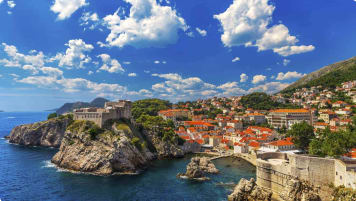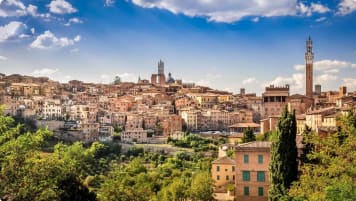Venice and its Merchants
An article that takes you on a journey to Venice in the Middle Ages and beyond. The famous merchants of 'La Serenissima' who dominated this medieval powerhouse for hundreds of years. Learn before joining one of the small group tours for mature and senior travellers couples and solo travellers to Venice and many other destinations in Italy.
5 Nov 21 · 17 mins read
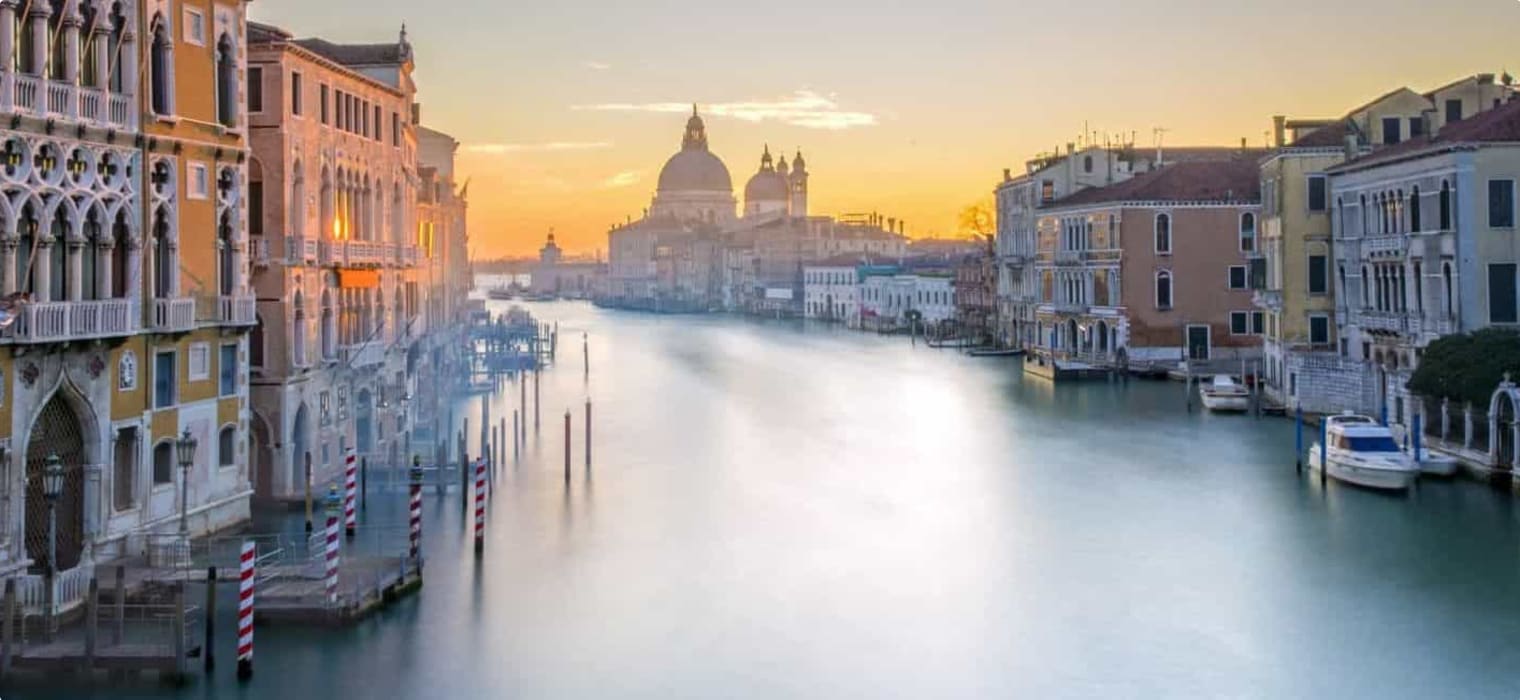
The Venetian state – a commerce and industry hub that was once the wealthiest and most influential centre of Europe for hundreds of years. A genius of its own kind and trade was the life force that kept the wheels turning. The world’s earliest mercantile state and the perceived birthplace of modern capitalism. The focus on commercial self-regard became a national ideology.
The trading republic of Venice
The Republic of Venice or Venetian Republic (Venice Italy – Venezia), traditionally known as La Serenissima (Serenissima Republica, “The Most Serene Republic”), was a sovereign state and maritime republic in parts of present-day Italy (mainly Northern Italy) which existed for 1100 years from 697 AD until 1797 AD. At the height of its power, it was the 3rd largest state in Europe. It gained large-scale profit from its neighbouring middle European markets and was the major centre of trade with the Arabs and indirectly with the Indians in the Middle Ages through the Nile river and the markets of the Alexandria and Constantinople. Furthermore, it strengthened this position during the Renaissance.
Karl Marx noted that capitalism first developed in Italy, and it dominated the European economy past the late Middle Ages. It is regarded as the place of origin of the economic development and integration for the rest of medieval Europe during the Middle Ages. It is considered the world’s first actual international financial centre. Venice became wealthy and mighty through naval trade, as their geographical position allowed the merchants of Venice to be the key middleman between the Middle East and destinations throughout Europe. It was the commercial prototype for 17th century Amsterdam and 18th century London. It was the market to the world.
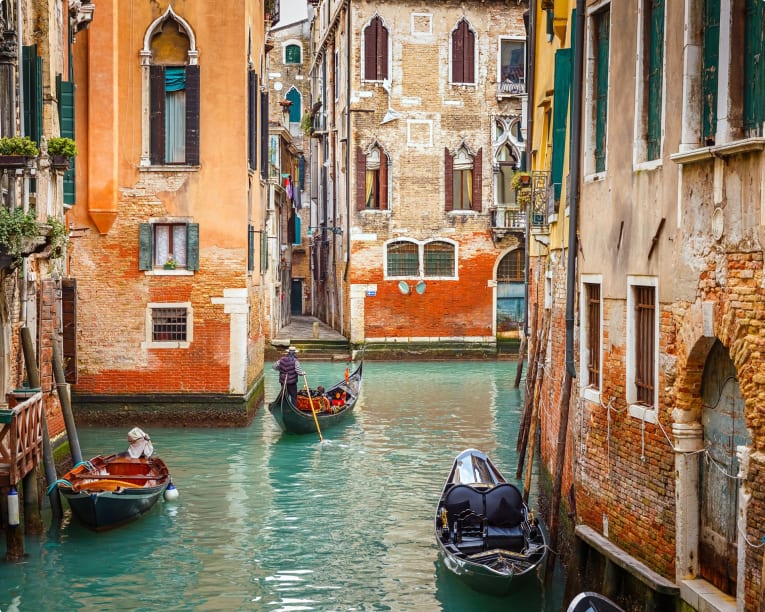
The early years of Venice
The republic’s historical roots reach back as far as the Etruscan Culture (ancient Italian civilisation), but the initial city’s population grew with many Veneti (Celtic people living along the Italian coast) fleeing various wars and invasions and making a home in the lagoon. The principle of trade rests on endless expansion, but Venice was limited in its own borders and location.
Imagining its centre being the lagoon communities living on islands of the abundant present-day city of Venice, but its jurisdiction extended into Dalmatia further into Italy and across many Mediterranean and Aegean islands, to Greece, including Cyprus and Crete. It had far-reaching trading outposts that were only ever established in the interest of commerce but never for glory. It fought numerous battles against the Ottoman Empire and earlier Muslim polities but nonetheless, it also engaged in substantial trade within the Muslim world. Many Muslim cities, including Istanbul (formerly known as Constantinople or Byzantium), had Venetian quarters. Crusades and the conquest of the Byzantine Empire and its capital and its connection opened trading routes to the east and far into Asia. But these voyages, like the costly convoys to Flanders, Tunisia, Syria and Constantinople, required significant financial capital. The crusades brought an expansion of trade, and with that, Venice profited financially. This financial advantage secured Venice’s standing amongst the trading nations for a very long time.
A century before the sack of Constantinople (1204) and marking the culmination of the Fourth Crusade, trading colonies in the region flourished. The Venetian’s conquest of the Greek islands and beyond created the cornerstone of free trade for the republic and enabled convoys of large ships to sail to markets in the Mediterranean Sea. In addition, it provided the basis for opportunities to regulate the local balances of power, considering the region was permanently under threat of being overpowered by another invading force. Securing the basic needs of the locals who appreciated access to goods that were hard to come by in the Venice lagoon was part of the republic’s mission to become at least partially independent.
The Merchants and trade defined the city.
The system of trade determined the social and cultural systems of the city. The merchants were the masters of Venice. Only the nobility or patriciate had the right to pursue the lucrative long-distance trade, but this nobility was not built upon the hierarchy of birth, like it would have been in England, but was a social network entirely based on commercial enterprises and the resulting riches. It was the same patriciate that erected a monopoly of political leadership, and this inaugurated a government of merchants.
It left production and small business to the strata of its society that could not become a member of the council – which was the visible sign of nobility of money. On the other hand, they provided protection against competitors, against violation of secrecy – and exercised strict law control. So that means the Venetian merchants became a great hereditary patriciate. As Venice’s power and influence grew, cities and territories along the Adriatic coast operated under Venice’s control, predominately to deny pirates opportunities to attack, as well as expanding the reach of Venice’s navy.
This period was characterised by the republic’s infamous power struggles, creating economic inequality, with powerful families and political intrigues ruling the day. The families, such as the Dandolos or the Giustinianis, controlled much of the commerce but made up a relatively small number of the population. A domestic partnership, which could be seen as a brotherhood of family businessmen, incorporating fathers, brothers and sons was known as fraterna – generations of the rich and powerful coming together with their eyes one common goal. The hypothetical association between currency, credit and exchange fabricated a new society, a Venetian society of commodities and consumers. The government was practical and efficient on many levels: controlled spending, a keen eye for auditing, very prudent resource management, skilful drawing-up of contracts, and no standing army that would cost unnecessary money. Venice’s well-functioning financial and economic history matches the idea of the philosopher’s stone – the alchemy of capitalism.
To understand Venice, one must understand the image of the merchant
To understand Venice, one must understand the image of the merchant. Speculator, risk-taker, superior, competitive, coercive at times, calculated, secretive, thrifty and simultaneously cautious. The paradox of Venice is the paradox of the merchant. They had little non-financial use for art, were not interested in the affairs and state of the world, and would see a war as an opportunity rather than a problem. Ultimately, Venice became home to an extremely wealthy merchant class, who patronised renowned art and architecture along the city’s lagoons because there was no profit to be made with it.
Venetian proverbs let us take a glimpse into this long-gone society: “With truth and lies you sell the merchandise” or “A man without money is a corpse that walks”. Towards the end of the Middle Ages until the 18th century, Venice was the capital of luxury goods. The consumers of luxury items, the diverse and colourful Venetian citizens, and opulent festivities such as the Venice carnival added to the picture of Venice being regarded as the “sensual city”.
The lack of natural resources generated the need for manufacture. This was the only way for Venice to keep its status as supremacy, and with that, it encouraged prodigality to reach its goals. In the later Middle Ages, the production and sourcing of;
- drapery,
- silk,
- glass,
- soap,
- wax,
- carpets and
- more decadent food products such as marzipan or caviar were important.
The trade in coffee, spices, wines, perfumes, gold jewellery and rock crystal were flourishing.
When Venice’s remarkable achievements are recounted, one trade that was very lucrative but is less spoken about is the slave trade. Slaves were a very dynamic source of income. Many patrician families had several slaves in their households, artisans used slaves in their shops or workshops, and convents owned slaves for domestic services. The shipping industry certainly contributed to the number of slaves in service, and in 1580 there were more than 3000 slaves in the capital city. The renowned artist Vittore Carpaccio painted black gondoliers, and these were all slaves in service.
In the early days, Venice was controlled by the Byzantine Empire – the Eastern half of the Roman Empire, which survived the fall of Rome. Due to political takeovers and the resulting isolation, Venice became an increasingly autonomous city, gaining lucrative trading concessions from the Byzantines while serving as a safe haven for migrants and refugees, which swelled the city’s size and prestige.
In 726, the Venetians partly established their independence and elected Orso Ipato as Doge (i.e. duke). The republic was ruled by the Doge, who was elected by members of the Great Council of Venice – the city-state’s parliament – and ruled for life. The ruling class was an oligarchy of merchants and aristocrats. Venice and other Italian maritime republics played a central role in cultivating capitalism. Venetian citizens generally supported the system of governance. The republic enforced strict laws and used ruthless tactics and punishment in its prisons.
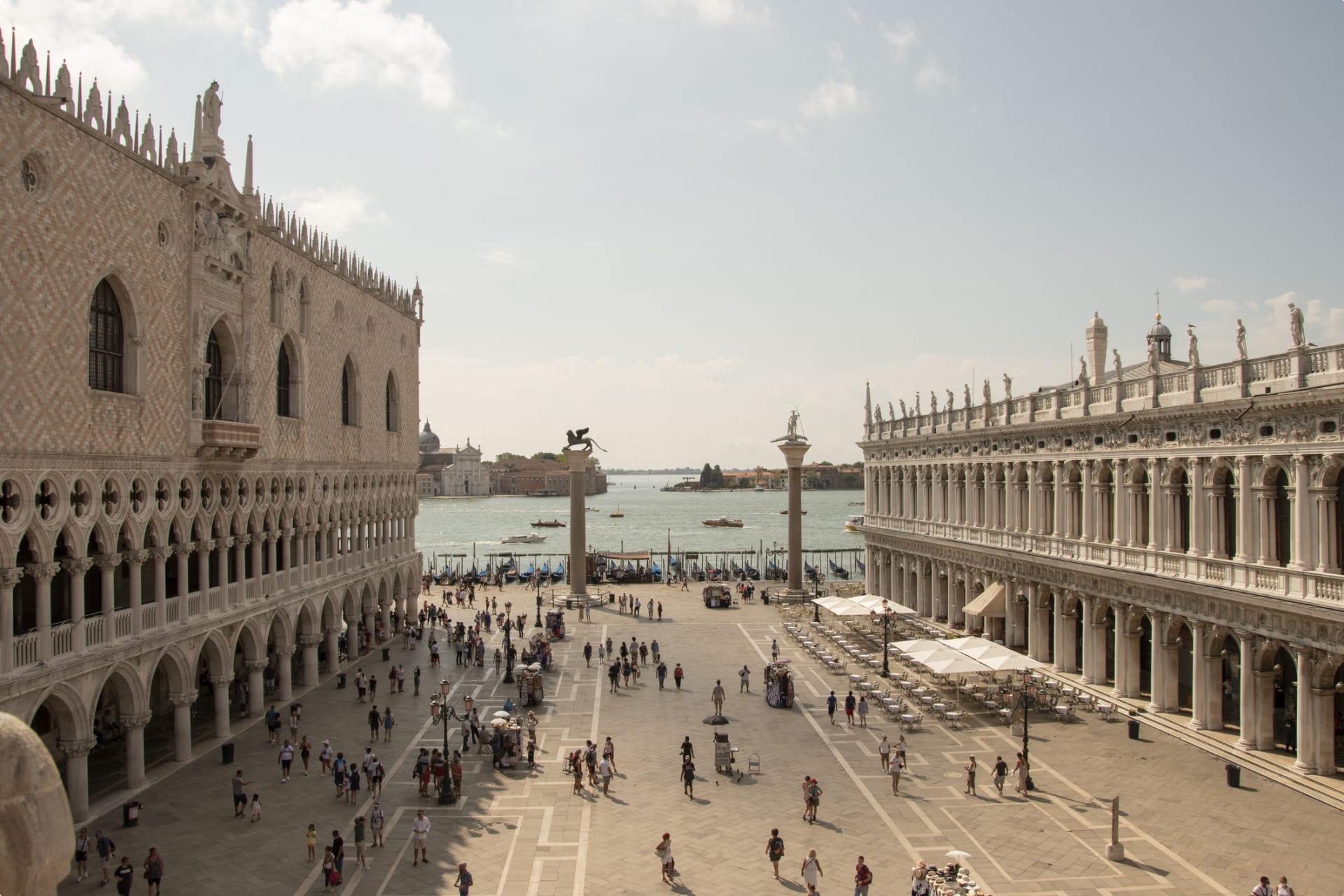
The arrival of the Renaissance period
The Renaissance was a spirited period of European cultural and artistic expression: It was the artistic, political, and economic “rebirth” following the Middle Ages and marking the rise of the modern world. Recognised as a period that lasted from the 14th to the 17th century, the Renaissance promoted the rediscovery of classical philosophy, literature and art.
The Venetian Renaissance had a distinct character compared to the general Italian Renaissance or the European Renaissance. Its isolated location enabled the citizens to take art and its various forms more seriously and prioritised artistic expression in a very Venetian way. The rise of cultural materialism brought with it a new phenomenon: a cosmopolitan culture. Music became part of the artistic landscape and brilliant Baroque composers such as Vivaldi, Marcello and Galuppi left their mark on the city. Venetian painters, such as the Renaissance master Titian, first build an international reputation during the early years of the Renaissance. They were embodying their art by addressing the senses of the beholder with expressive colours, glowing light, and capturing the beauty of nature. Allegiance with Byzantium promoted a lasting preference for gold mosaics and symbolic images of the Virgin. By the 1470s Venetian painters had mastered the renaissance novelties of Florence and other parts of Italy such as Rome, Milan and Naples. Owing to the city’s successful oriental trade for spices and luxury goods, Venice’s artistic community had the privilege to use the finest and most costly pigments. Even the usually so independent artist became a contributor and supporter of this capitalistic system and culture.
Managing the currency of money
Money – as a primary currency – mainly consisted of gold or silver. As a result, the economy and the city’s wealth depended heavily on these metals’ timely and fluid circulation. Therefore, Venice had to set in motion a highly adaptable system of currencies and exchange rates between coins from all over, consisting of silver and gold. This was important to maintain and strengthen its role as centre and leader of international trading.
The exchange rates between the currencies circulating within Venice and outside the city borders had to be adjusted adequately and consistently. Exchange rates were applied in the republic’s colonies in the same manner. Transporting gold and silver was a dangerous and expensive affair, so Italian traders looked for different means of payment. Crediting became the solution to overcome the inescapable lack of precious metals and sped up at the same time the turnover of goods. Venice had several of the earliest banks in the world – found in the city records – and private banks since the 13th century. Simple bank transfers or a bill of exchange were the saviours of business transactions and the initiation of a financial revolution. Loan floating was another driver of the financial hub and contributed to the flourishing trade of the Venetian merchant(s). Cambists, who were traditional financial professionals, played a vital role in initiating the republic’s financial position and the later state-controlled banks, whose forerunner in Venice was the “wheat chamber” or camera frumenti. Providing innovative solutions to the financial problems in the 14th century, such as major price fluctuations and making strategic commodities widely available, led to the establishment of the Wheat Chamber and the Salt Office. Venice was also the forerunner when it came to a national debt system. It created the Monte, which was the first known publicly funded national debt. Public banks existed since 1625, and this once again proved that Venice could see outside the box what other cities or states seemed to overlook. St. Mark’s Square (called the “marketplace of the world” and named Piazza San Marco) and its St Mark’s Basilica (Basilica di San Marco), near the Doge’s Palace, are of significant importance remembering the Venetian history of finances.
Besides being an important religious landmark as well as wonderful examples of Venetian gothic architecture. St. Mark, the apostle from Alexandria, was identified as the city’s protector, which set Venice up being instated as an independent episcopal seat. The foundations of the present basilica were laid in 1063 in Byzantine style to show the wealth of the prosperous Venetian Republic. Moneylenders and moneychangers operated their financial business from the base of the Campanile, and their bills of exchange often stated Christian religion-related phrases. Venice truly brought money and religion together like no other before.
Foundations of Venice are in Salt
In the early years before the refugees from Veneto arrived, it prospered on the salt trade. Venice produced its own salt at Chioggia by the 7th century for trading to other parts in the region but eventually moved on to buying and seeking salt production throughout the Eastern Mediterranean. Salt was the earliest example of the region’s trading cornerstone and its hunger for productivity. The lagoon provided the perfect environment, and the Venetians pursued this business with vengeance.
The republic of Venice produced and traded high-quality salt, salted products, and other products along trade routes that came from the salt trade. The Venetians established a monopoly in salt supply to Italy and took over the salt trade from other salt production centres close to Venice. Venice played its cards well by bribing other producers in the Adriatic to close their manufactories. Salt from its own overseas territories was transported to and stored in warehouses in Venice, which enabled the monopoly to dictate prices. Born was the Venetian way of doing business: identify and crush any competition, import large amounts of the product for distribution from a centralised point of contact and sell for higher prices. Venetian merchants bought salt and secured salt production from;
- Egypt,
- Algeria,
- the Crimean Peninsula,
- Sardinia,
- Ibiza,
- Crete and
- Cyprus.
The inception of these trade routes also permitted the merchants to pick up other valuable cargo along the way. Indian spices were exploited in a similar fashion to salt, and as an example, in the 16th century, almost 600 tons of pepper were imported from Alexandria. They then sold or supplied salt and other goods to cities in the Po Valley – Piacenza, Parma, Reggio, Bologna and others – trading those for salami, prosciutto, cheese, soft wheat, and other goods. Venice was the golden city and became a fashion center that traded in luxuries like no other – the latest fashions of Europe and the world invented luxuries, luxuries inspired vast trade, trade boosted all sorts of industries.
Venice and the Arsenal
Despite intermediary trade dominating the Venetian’s commercial advances, shipbuilding and keeping a well-formed fleet was an industry and undertaking of utmost importance right from the beginning. Ships played a significant role in business endeavours, and this trade division was undoubtedly the most important employer.
The most considerable profit was anticipated and made with risky trade over long distances – the greater the risk, the more potential financial benefit. In the early 15th century, it is believed that the city’s mercantile marine had approximately 3,300 vessels at its disposal.
The Venetian ships sailed in convoys, and every year different trading expeditions to other parts of the world were carried out. Venice’s commercial instinct brought wealth and power to the city and its merchants by using the ships for transport, renting out the galleys to invested bidders, and making investments plus profit from Venice without even leaving the city. These argosies, a large merchant ship originating from Ragusa (now Dubrovnik, Croatia), which was a Venetian colony in the 16th century, were the mighty trump card of the republic.
During its peak years, the city-state formed a thalassocracy (maritime empire). It dominated trade on the Mediterranean Sea, including commercial trade affairs between Europe and North Africa and Asia. The Venetian navy contributed to the Crusades, most notably to the Fourth Crusade, as mentioned beforehand. Venice joined the Fourth Crusade to protect and expand its own interests and trading power.
Venice considered Rome more as an enemy than an ally and maintained a high degree of religious and ideological independence supported by the Patriarch of Venice. Venice had an exceptionally well-formed, independent publishing industry that provided a sanctuary from Rome and its Catholic censorship for many centuries. The republic was not in favour of joining the fighting activities of the Fourth Crusade, anticipating that it could possibly lose trade relations in multiple regions of the Middle East. However, the ruling Doge Enrico Dandolo was an ambitious leader and calculated the possibilities of mercantile expansion even if that meant losing some others in the process. Consistent with the Venetian way of doing business. One of the republic’s most famous sons was the merchant and explorer Marco Polo. He was born in Venice and travelled the Silk Road to China and is, until today, arguably the most known western traveller setting out as a young merchant in 1271 and travelling for 24 years.
When remembering the city’s profit-orientated activities, we must learn about the guild system of Venice. The number of Venetian guilds (scouli) varies from source to source, but that doesn’t make them less significant. There were 40-120 trading guilds and, of course, hundreds of occupations without a guild. Most of the Venetian guilds focused on and supported specific trades, crafts and arts. Providing training to novices, continuing education for the advanced tradesmen, identifying and setting performance standards for each type of trade, and representing the trade to the city and its potential customers.
But there was no merchant guild which is a representation of the merchant’s power and status in Venice. Many of the guilds also had a philanthropic stance. Affiliated with the church or with interests of public welfare, offering education in many ways and extending primary scholarly education for those that needed it the most. The biggest of the guilds were confraternities that existed to financially assist schools, hospitals, orphanages, shelters and similar. Members of these came mainly from wealthy groups of society, such as traders or merchants. Many of these public charities and organisations were merged under government control after the conquest of Napoleon. Public control of these services was the policy after that.
The Venetian republic’s commercial revolution reached its peak during the 15th century when the spice trade from India was monopolised using the Arabs and their critical locations to establish exclusive trade agreements that only benefited Venice. This prompted the Spanish and the Portuguese to embark on adventures of their own in search of new (trade) routes to India, and this, on the other hand, led to the discovery of the American continent and the start of the Modern Age. The introduction of new trade routes to the Americas and the East Indies via the Atlantic Ocean was the beginning of the end of Venice’s mighty maritime republic. In early Modern Times, the power of Venice peaked, but the small superpower state was not strong enough to challenge the boundless powers of the Ottomans and Spain with their seemingly endless resources. Bit by bit, Venice lost its colonies, trading outposts, and its monopoly for commercial activities in the Adriatic Sea.
Additionally, financial capital coming from the Netherlands and out of England overwhelmed the Venetian competitors. It became more and more difficult for Venice to establish trade monopolies and trade shifted to the North Atlantic. Market access became almost impossible in some regions because protectionism – a government-initiated policy that restricts international business to help local industries – became a widespread tactic in most Mediterranean and European states. In its final year, the Venetian state became a conservative agrarian system, and some efforts were made to boost tourism. Trading in other parts of the world boomed in the 18th century, but Venice wasn’t chasing decadence anymore. Land – the terra firma – became a major source of income instead, and all commercial efforts were concentrated on this new endeavour. By the 18th century, agriculture and cultivation turned into the most profitable income that there was.
Mercantile interests turned to farming but not everyone in the community of the republic’s nobility wanted to make the turn. The Venetians became more provincial, and their international status faded. Nonetheless, the city’s primary market, the Rialto, remained the focal point of merchant power. The Rialto is a central area of Venice, located in the sestiere of San Polo. It still is and has been since the early days of the republic for many centuries, the financial and commercial heart of the city. Rialto is known for its colourful markets as well as for the monumental Rialto Bridge across the famous Grand Canal.
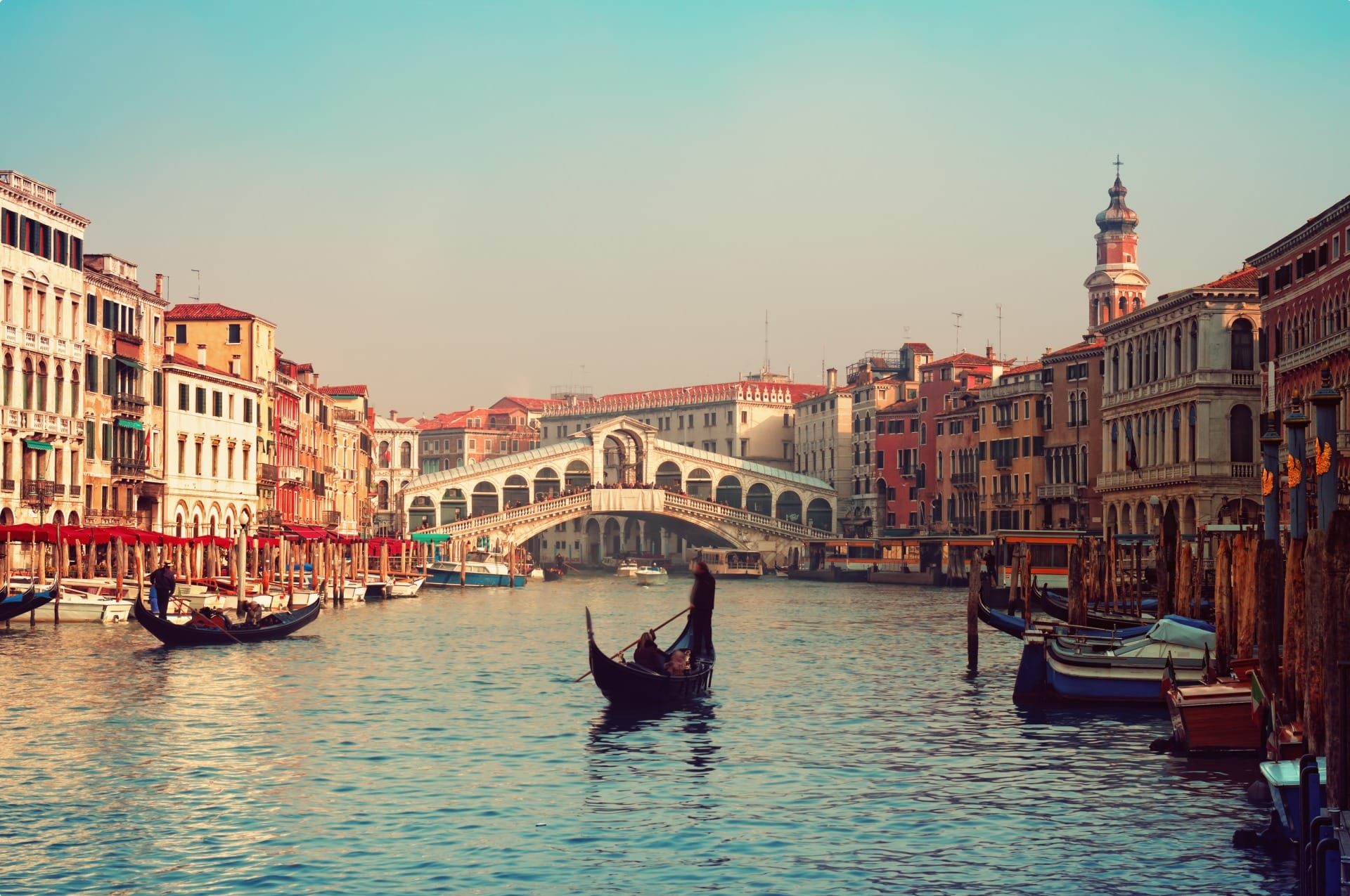
The narrative of the merchants of Venice provides an unaltered insight into Italian culture and the legendary Italian indulgence of the past and present. Shakespeare’s famous play “The Merchant of Venice” from the 16th century gives us a glimpse into the ups and downs of the financial struggles of the time and reflects on the conflict between self-interest and love.
Venice as an experience for the traveller
Venice should be part of every Italy tour, whether it is in the form of a private tour or a small group tour of Italy.
A traveller that is interested in European history will find Venice very fascinating and expansive. A walking tour, guided tour, or small group tour of Venice through atmospheric narrow streets, passing by glorious architecture, beautiful bridges, and picturesque canals, will be an unforgettable experience. Venice hosted the early trade fairs of Europe, and the Festa della Sensa originating in the 12th century, is until today, a popular festivity celebrated in May each year. With water being an unescapable feature of Venice, exploring the city with a gondola ride, water taxi, or the Vaporetto, the Venetian public waterbus has its own charm. Experience the Acqua Alta, Venice’s flooding phenomenon, which happens various times a year when the Adriatic Sea tide rises. This event is only called Acqua Alta when the sea level rises over 90 cm. It typically only lasts only a few hours at a time.
Whether you are a tourist arriving by plane, flying into the Venice Marco Polo airport, or land in the lagoon with a cruise ship, the bell tower of St. Mark’s Basilica (St Mark’s Campanile or Campanile di San Marco) will be the most noticeable landmark to see. The Campanile is the tallest building in Venice and climbing up the bell tower offers fantastic views of the Serenissima while one can hear its bells from away. Santa Croce is located in the northwest part of Venice. Curiously, it is the only neighbourhood in Venice where cars can travel. Santa Croce is a laid-back, slightly off-the-beaten-track area with a local vibe.
Day trip(s) and many other exploring opportunities in the region are on offer. Seeing many magnificent UNESCO World Heritage sites: Visit the island of Torcello to see the Basilica di Santa Maria Assunta with its Venetian-Byzantine mosaics. Head to Lazzaretto Nuovo, an island of about nine hectares located in the northern part of the Venice Laguna and visit its eco-museum that attracts thousands of visitors each year. Or venture to San Giorgio Maggiore, east of Giudecca and south of the main island group. This island is an important landmark and stars a 16th-century Benedictine church designed by Andrea Palladio. The island, or more specifically its Palladian church, is an important landmark and is one of the most photographed basilicas in Venice.
Venice and Odyssey Traveller
All of these can be combined with a classic Italy tour visiting wonderful landmarks and magical places with a tour company specialised in small group tours: Southern Italy, Cinque Terre, Amalfi Coast, Tuscany, Lake Como, Sicily, Lake Garda, Pompeii, Central Italy and sites of Ancient Rome.
Odyssey started in 1983 as a collaboration between the Universities of Australia and New Zealand in the continuing adult education market, so it is almost 40 years old. The company has been stewarding fellow travellers on an ever-expanding collection of diverse and curious small group tours. Tours are supported by a great group of leaders who are typically retired academics and schoolteachers with a passion for continuing to be curious and sharing knowledge with you.
Small is Beautiful – Economics as if People Mattered is a collection of essays by E F Schumacher published in 1973. He sets out the case for the community, not corporations, as the model for economic success. It influences us in all we do. For Odyssey Travellers, the term small is beautiful, captures the essence of the experience offered. We endeavour:
- to provide touring programs that stimulate the mind, ideally changing perspectives and perceptions through travel and shared knowledge,
- to offer small groups for like-minded people to explore,
- to foster a collegiate, open touring platform encouraging friendships to be made and journeys shared,
- to tread softly in the places we visit and not overwhelm the art galleries, museums, environment, or accommodation we use.
As a small team, we are orientated to learning about you the traveller, ensuring you are treated the way you wish to be treated, following the adage “treating others how you wish to be treated yourself”. When you travel with us, you may be part of a small group, typically 8-14 people, and be part of a small business group that averages some 40 people per week travelling with us all around the world. Our scale of operation and our tours anywhere in the world are orientated for the selective few, not the many.
By travelling with us, you assist us in supporting, each year, at least one academically bright University student who might be struggling financially to continue their studies, with a scholarship to underpin those studies for at least one year.
Related Articles
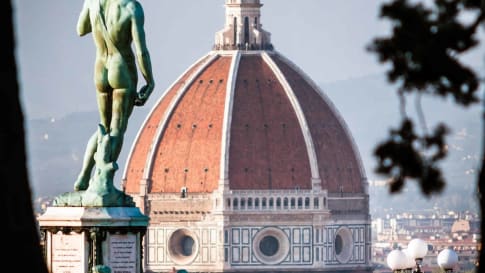
Brunelleschi's Dome: The Amateur turned Renaissance Genius
Filippo Brunelleschi. We will look at who he was and how he came to win the competition to design the dome for Florence's cathedral.
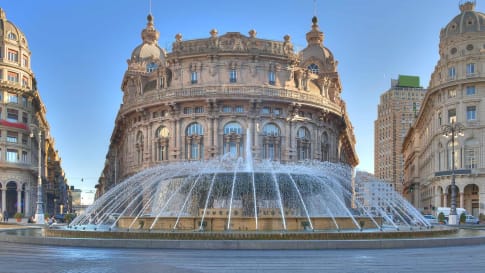
History of Genoa, Rival to Venice
In this article, we will look at the history of Genoa, and its rivalry with Venice that led to several wars fought between the two city-states in the 12th to 14th centuries.

Italian Renaissance Families: The Medicis
This blog is part of a series on five influential Italian Renaissance families that shaped Italy, especially during the fifteenth and sixteenth centuries. It is based on both our Italian Renaissance Summer School course, and…
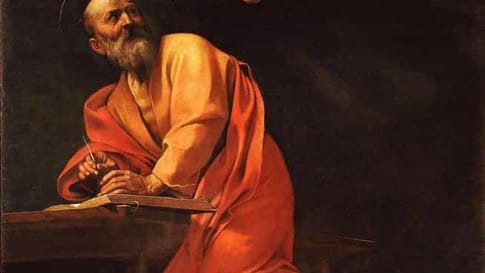
Learning about Caravaggio's Paintings: The Definitive Guide for Seniors
Caravaggio’s Paintings Michelangelo Merisi da Caravaggio (1571-1610) was a leading 16th century Italian painter whose short but tempestuous life rivalled the controversy and drama he created through his highly influential art. Born in Lombardy, northern…

Mediterranean Islands: Malta, Sicily, Sardinia and Corsica
Malta, Sicily, Sardinia and Corsica: An Educational Journey through Western Mediterranean This article takes you on a journey through the beautiful islands of the western Mediterranean – Malta, Sicily, Sardinia and Corsica – by tracing…
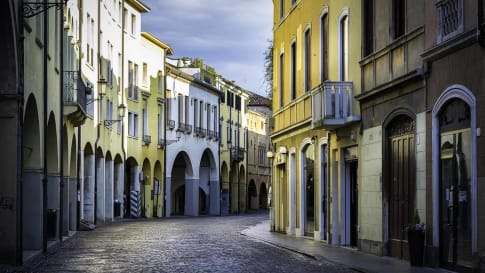
Padua, Italy
The History and Attractions of Padua By Marco Stojanovik Padua city is an intellectual, artistic, and economic centre in northern Italy, situated on the River Bacchiglione, west of Venice. The city has a long history…

Secrets of Venice: A History of Espionage
Secret Venice: The Council of Ten and Medieval Espionage The city-state of Venice emerged on a lagoon from the ruins of the Roman and Byzantine empires in the 9th century and grew to become the greatest…

Venice and the History of Maps
Venetian Maps and How they Ruled the World ‘Venice was always a frontier,’ Peter Ackroyd (2009) declares in Venice: Pure City. ‘When the empire was divided in the time of Charlemagne, the lagoons of Venice…
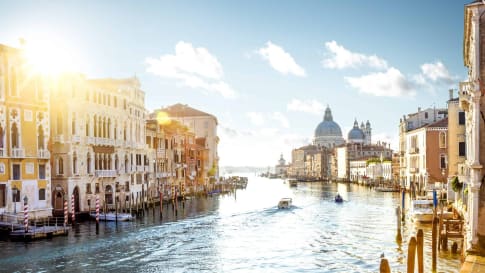
Venice, Italy
Explore the sights and wonders of Venice, 'La Serenissima'. A medieval powerhouse, with its stunning architecture, iconic canals, waterways and gondolas. Odyssey offers small group tours for mature and senior travellers couples and solo travelers to Venice and Italy.
Related Tours
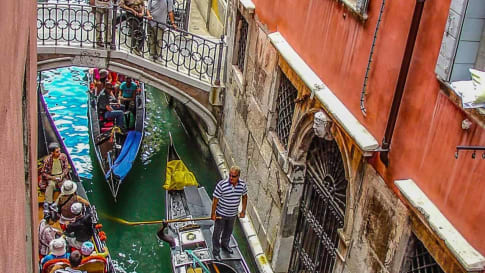
18 days
Sep, AprSmall group tour to Venice and Genoa
Visiting Italy
City pairs and rivalries exist. When spice, gold, steel swords and cloth where major commodities in the Mediterranean then Venice and Genoa fought for market share. Venice offered mercenaries, Genoa, banks. Italian history tour for those interested in joining a small group educational tour for senior couple and mature solo travellers.
From A$10,995 AUD
View Tour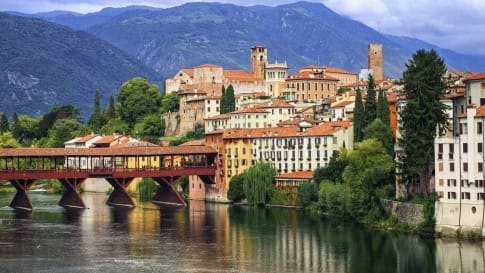
22 days
Oct, AprTour of Northern Italy's Lakes and Alps
Visiting Italy
A European tour to the stunning Lakes Region of Italy. Your travel experience begins in Milan, daily itineraries include two of the region’s lakes - Garda and Maggiore, plus the Roman villa Desenzona and a day in Cinque Terre. Local guides share experience and knowledge with you on this escorted small group tour for couples and solo travelers.
From A$14,895 AUD
View Tour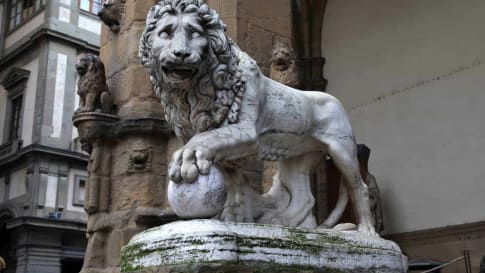
21 days
Apr, Aug, MayRenaissance Italy Tour: Story of Five Families
Visiting Italy
Explore Renaissance Italy on this small group tour though an examination of five significant city states. Florence, Urbino, Ferrara, Mantua and Milan were all dominated by families determined to increase the status of their city through art and architecture. Spend time coming to know the men and women who helped create the cities, as well as the magnificent legacy they left behind.
From A$14,295 AUD
View Tour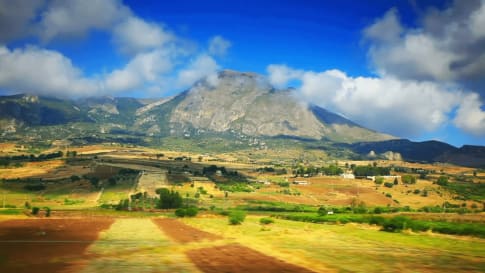
25 days
Apr, Sep, OctMediterranean Islands Small Group Tour | Malta, Sicily, Sardinia and Corsica
Visiting Corsica, Italy
For centuries Malta, Sicily, Sardinia and Corsica held the key to the Mediterranean. Unlike other European tour companies, Odyssey provides a tour leader and local guides to share detailed itineraries about the destinations on these small group journeys. This escorted tour of western Mediterranean explores the geography, history, culture and peoples of these 4 islands. Small group tour for mature couples and solo travellers. A reasonable single supplement is charged.
From A$19,750 AUD
View Tour
22 days
Mar, Sep, MayFlorence: Living in a Renaissance City
Visiting Italy
A small group tour with like minded people, couples or solo travellers, that is based in Florence. An authentic experience of living in this Renaissance city The daily itineraries draw on local guides to share their knowledge on this unique European tour. Trips to Vinci, Sienna and San Gimignano are included.
From A$14,375 AUD
View Tour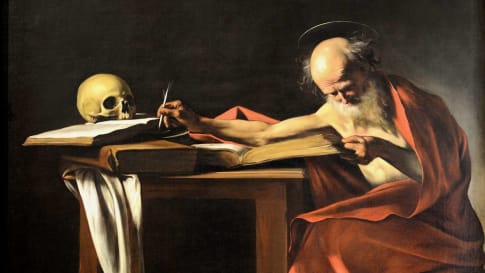
20 days
May, OctCaravaggio’s Journey | Small Group Tour in Italy
Visiting Italy, Malta
On this small group tour of Italy and Malta for mature and senior couples and solo travellers we trace the life of Caravaggio, exploring the artistic works he left behind and the tumultuous life he led. We follow him from his birthplace in Milan to Rome, Malta, Sicily and Naples. In each place he lived Caravaggio left behind a rich legacy of art for us to admire.
From A$15,125 AUD
View Tour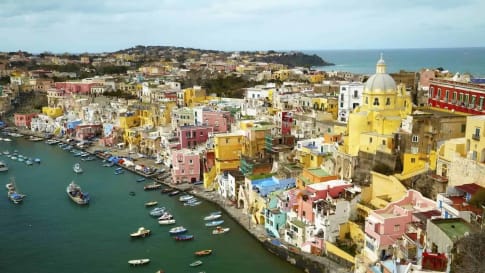
22 days
Jan, Apr, SepAncient History of Southern Italy & Sicily group tours
Visiting Italy
Our program for senior travellers, as well as featuring the rugged countryside of Southern Italy, also encompasses learning about the many civilisations that have shaped this land. We learn about the influence of the early Phoenicians, Greeks, Romans, Byzantines, Saracens, and Aragonese.
From A$16,995 AUD
View Tour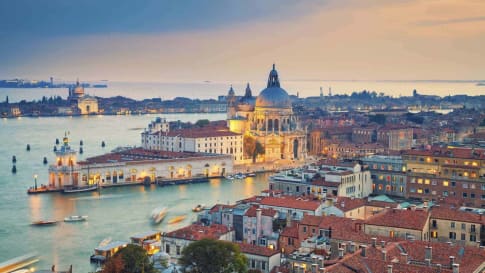
18 days
Aug, SepArt and History of Italy | Small Group Tour for seniors
Visiting Italy
Taken as a whole, Italian Civilization (which includes, of course, the splendid inheritance of Ancient Rome) is absolutely foundational to Western culture. Music, Painting, Sculpture, Architecture, Literature, Philosophy, Law and Politics all derive from Italy or were adapted and transformed through the medium of Italy.
From A$16,695 AUD
View Tour